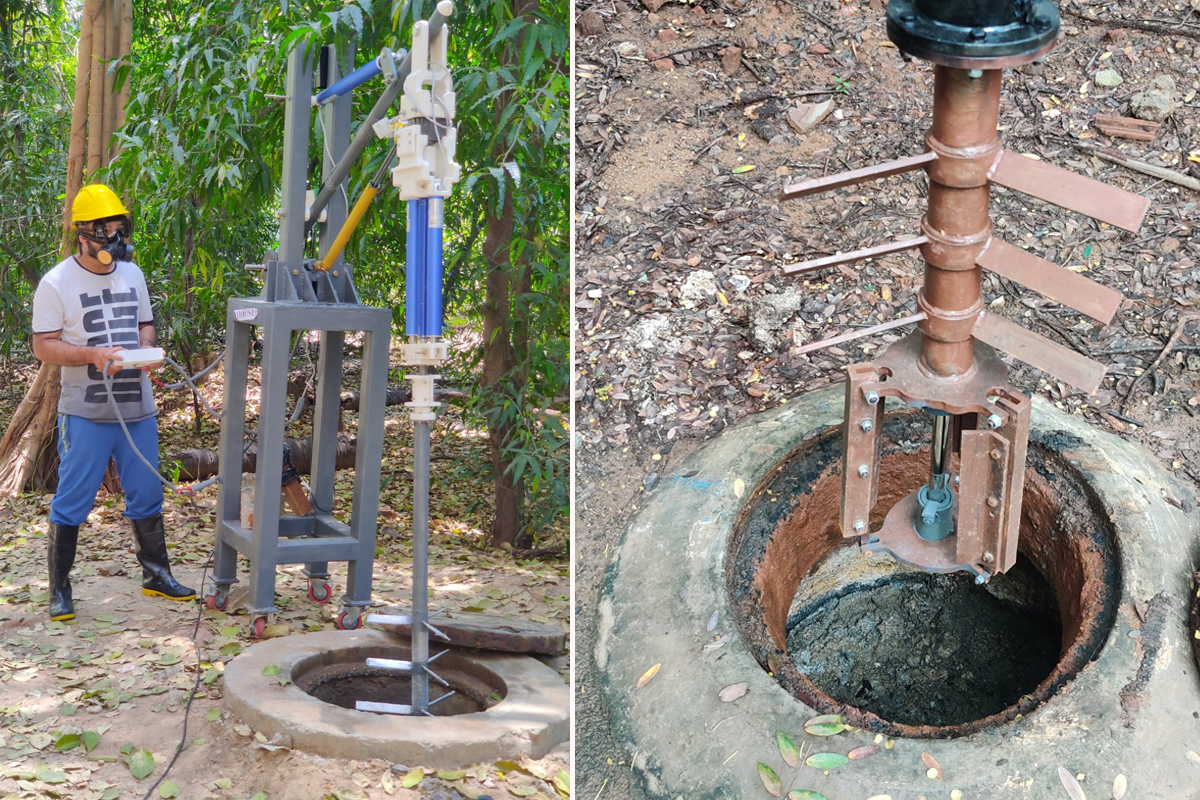In Europe and in industrialized countries, septic tanks are gradually disappearing, as villages, hamlets and somewhat remote places welcome the so-called main drainage systems! A very useful invention that lets us no longer have to worry about emptying the septic tank… A thankless and potentially dangerous job, given the bacteria and microbes that can survive there. In a country like India, one of the most densely populated in the world, septic tanks are still very present, and causes many deaths every year for workers who clean it “by hand” because there is no other solution. A start-up from the Indian Institute of Technology Madras (ITT Madras) may have devised a system to end this obsolete practice. This septic tank cleaning machine is currently being tested in Tamil Nadul province, where there have been many deaths… Discovery!
A practice that has been outlawed since 2013…
Cleaning of septic tanks “by hand” by Indian workers has been banned in the country since 2013. India has recorded nearly 1,000 deaths since 1993 due to this inhumane and dangerous practice. But the septic tank cleaner continues to work because there is no other solutionor that other alternatives are too expensive. Prabhu Rajagopal, professor in the mechanical engineering department of IIT Madras, at the origin of this invention, explained that this machine would be a game changer… He detailed that Septic tanks are a toxic environment, filled with semi-solid and semi-liquid human waste that makes up about two-thirds of the tank.
“472 deaths from 2016 to 2020 and 26 deaths this year due to manual scavenging were recorded with details of each incident sent to the central government!”. Yet he continued to deny even one death. #ManualScavenging #stopkillingus” Bezwada Wilsonin charge of the National Responsible Agency association, Safai Karmachari Andolan
What is this important machine?
It therefore comes from ITT Madras, was designed by the new company Solinas, and is called HomoSEP. Thanks to the rotating blade mechanism which is installed according to the diameter of the hole, it can homogenize the hard mud to melt it and can pump it thanks to the suction mechanism. Solinas said sanitation workers could operate it easily with a little safety training For example. This is definitely an important point, as HomoSEP is a powerful machine that will mix up the residue from the septic tank and then suck it up.
Who discovered HomoSEP?
At the beginning of the project, it was developed by Divanshu Kumarfinal year master’s student, supervised by Prabhu Rajagopal. The project was presented during a competition in 2019, the Carbon Zerp Challenge. Students who receive financial support from his university, he was then able to find a start-up company, Solinas Integritu Private Limited to develop his engine. Students are also the leaders of this start-up.
Finally, the project is supported by GAIL, a state-owned Indian gas company, as is the French multinational CAPGEMINI, which provides support in terms of robotic portability and miniaturization. Therefore HomoSEP can literally change the lives of workers at risk, if it is to cover all regions of the country, whereas in France we have not asked ourselves this question for a long time. A great discovery, right?

“Twitter junkie. Hipster-friendly bacon expert. Beer ninja. Reader. Communicator. Explorer. Passionate alcohol geek.”







